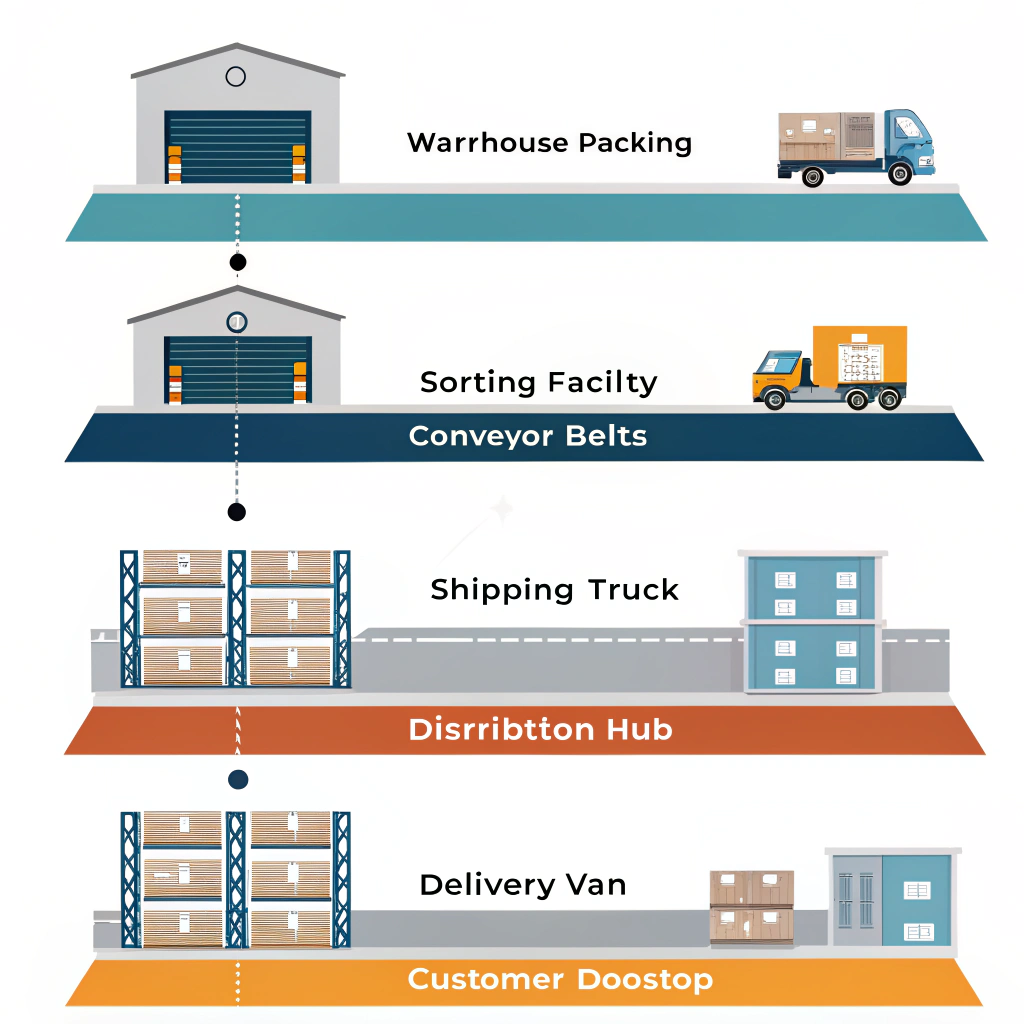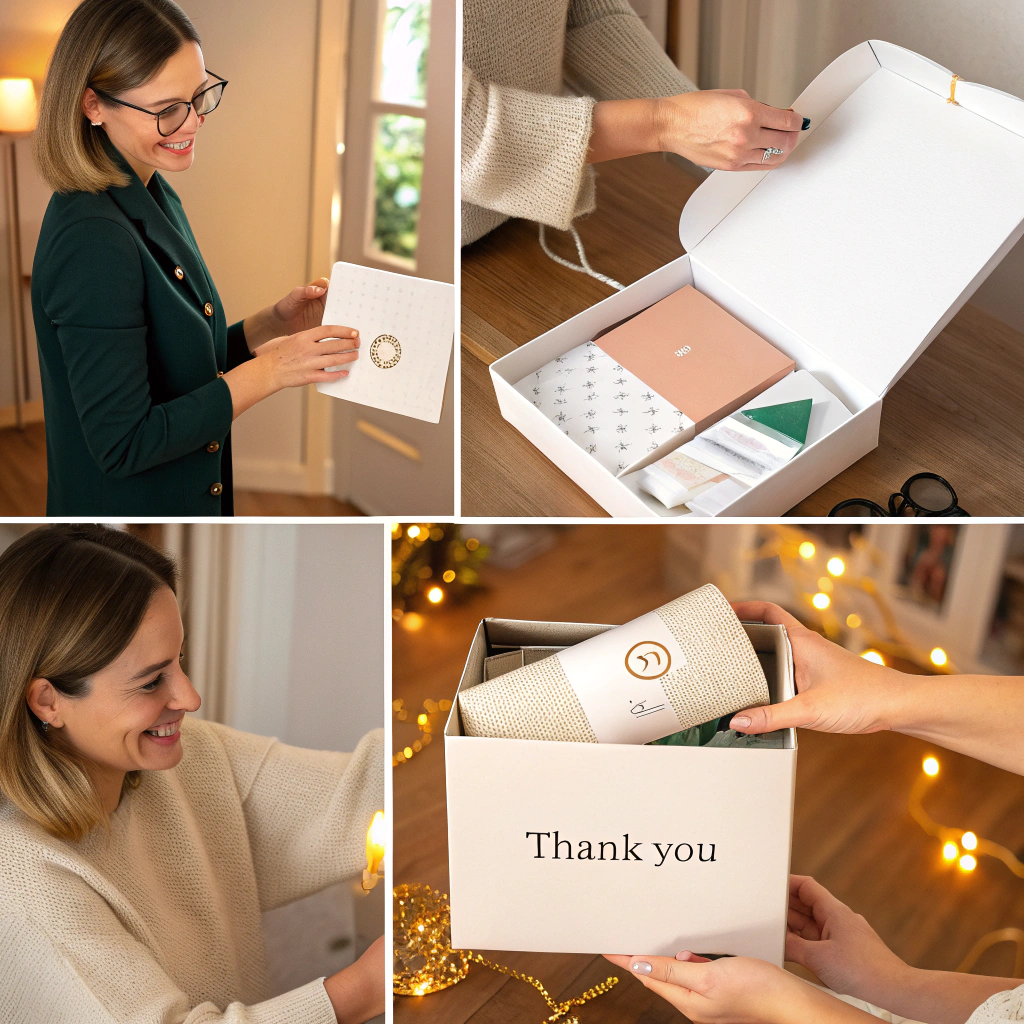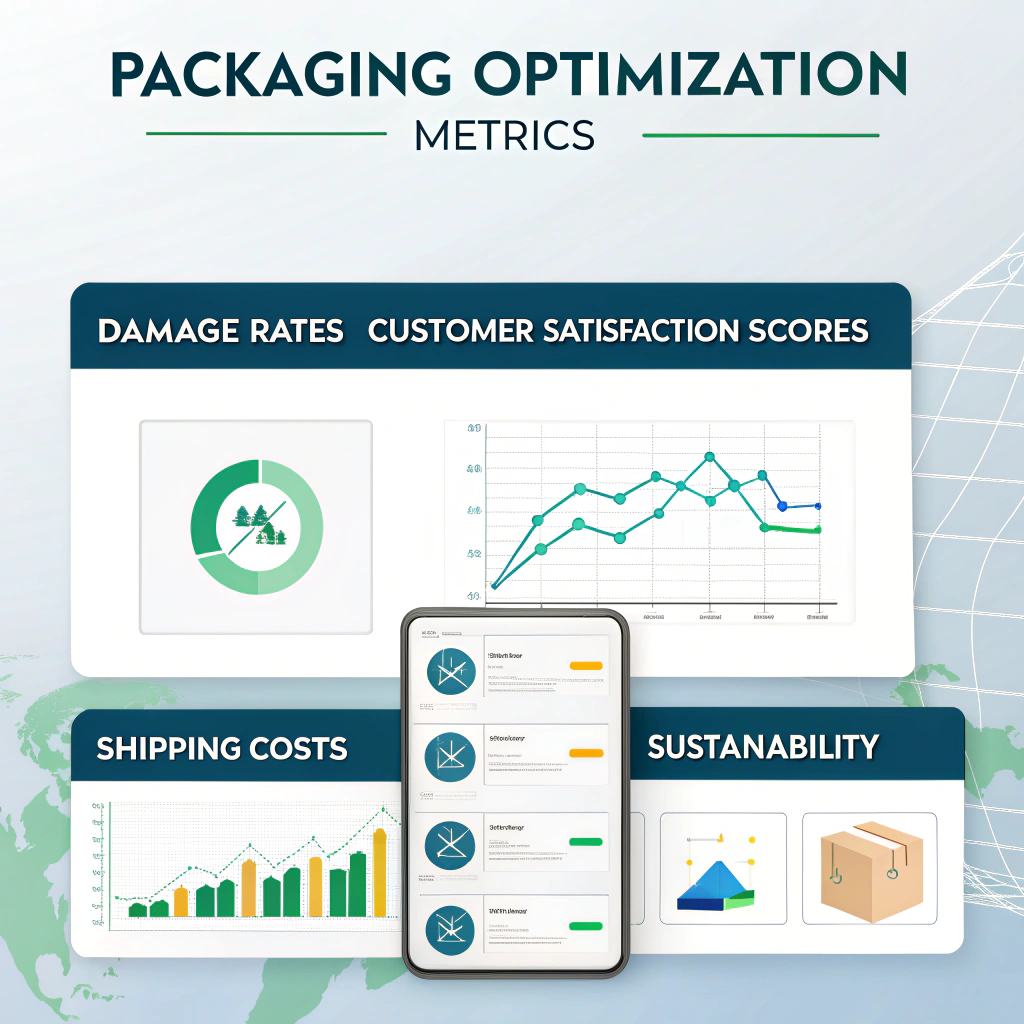E-commerce Packaging Optimization: Mastering Shipping and Unboxing
E-commerce packaging faces a unique challenge: it must protect products through rough handling while creating an memorable unboxing experience that drives customer loyalty. With 73% of consumers willing to pay more for sustainable packaging and 40% sharing unboxing videos on social media, getting this balance right is crucial for business success.
The Dual Challenge of E-commerce Packaging
Protection vs. Experience
Traditional retail packaging only needs to look good on shelves and protect products during controlled transport. E-commerce packaging must survive:
- Multiple sorting facilities
- Conveyor belt drops
- Pressure from heavy packages above
- Temperature variations
- Rough handling by multiple carriers
Yet it must still create a positive emotional response when customers open it.
Understanding the Shipping Gauntlet
The Journey Your Package Takes
Your carefully packed product faces numerous challenges:
- Fulfillment Center: Initial packing and first handling
- Local Sorting Facility: Automated sorting, potential drops
- Transportation: Vibration, temperature changes, pressure
- Regional Hub: More automated sorting and transfers
- Final Mile Facility: Last sorting and loading
- Delivery: Final handling and placement
Each step introduces potential damage points that your packaging must address.

E-commerce packages face up to 15 handling points during shipping – each one a potential damage risk your packaging must survive.
Design Principles for Shipping Resilience
The Right-Size Revolution
Dimensional Weight Optimization: Carriers charge for space, not just weight. The goal is finding the smallest possible package that still provides adequate protection.
Box Size Strategy:
- Measure your product’s protective needs, not just dimensions
- Account for cushioning materials in initial sizing
- Consider product orientation during shipping
- Factor in seasonal variations (gift wrapping space)
Material Selection for Durability
Corrugated Cardboard Edge Crush Test (ECT): Choose materials based on stacking strength, not just appearance. ECT ratings determine how much weight your box can support.
Protective Fill Options:
- Air pillows: Lightweight, good for filling voids
- Paper fill: Sustainable, good brand image
- Bubble wrap: Maximum protection, higher cost
- Foam inserts: Custom protection, premium feel
Structural Engineering for E-commerce
Internal Packaging Architecture: Design internal structures that hold products securely regardless of box orientation. Products should not move more than ½ inch in any direction.
Closure Security: Standard packaging tape isn’t enough for e-commerce. Consider:
- H-taping method for maximum security
- Water-activated tape for tamper evidence
- Security tapes that show “opened” when tampered with
Creating the Unboxing Experience
Psychology of Unboxing
The unboxing experience begins before the package is opened. Customers form impressions based on:
- Package condition upon arrival
- Ease of opening
- First visual impression
- Discovery sequence
- Perceived value
Designing for Delight
Visual Hierarchy in Unboxing:
- Exterior Appeal: Clean, undamaged appearance builds anticipation
- Opening Ritual: Easy but deliberate opening process
- First Reveal: What customers see first sets the tone
- Product Presentation: How the product is displayed/positioned
- Additional Elements: Thank you notes, samples, instructions

The perfect unboxing experience follows a deliberate sequence designed to build excitement and reinforce brand value at every step.
Optimization Strategies by Product Category
Fragile Items Strategy
Electronics/Glass:
- Custom foam inserts molded to product shape
- Anti-static materials for electronics
- “Fragile” messaging and orientation arrows
- Double-box method for extremely delicate items
Soft Goods Strategy
Clothing/Textiles:
- Vacuum-sealed presentation for space efficiency
- Wrinkle-prevention through proper folding
- Brand presentation through packaging layers
- Sustainable mailer options for environmental consciousness
Multiple Items Strategy
Subscription Boxes/Multi-item Orders:
- Compartmentalization to prevent item interaction
- Weight distribution for balanced shipping
- Logical unpacking sequence
- Individual item protection within shared space
Technology Integration for Optimization
Smart Packaging Solutions
QR Codes and NFC Tags:
- Link to unboxing videos or setup instructions
- Product authentication and warranty registration
- Customer feedback collection
- Reorder convenience
Temperature Indicators: For temperature-sensitive products, include indicators that show if safe transport conditions were maintained.
Data-Driven Optimization
Damage Analytics: Track damage rates by packaging type, carrier, and season to continuously improve designs.
Customer Feedback Integration: Systematic collection of unboxing experience feedback to identify improvement opportunities.

Data-driven packaging optimization tracks damage rates, costs, and customer satisfaction to continuously improve shipping performance.
Sustainability in E-commerce Packaging
Balancing Protection and Environmental Impact
Material Choices:
- Recycled content without compromising strength
- Biodegradable fill materials
- Minimal ink usage with maximum brand impact
- Right-sizing to eliminate waste
Circular Design Principles
Design for Reuse: Create packaging that customers want to keep and reuse, extending brand exposure and reducing waste.
Easy Recycling: Use single-material construction when possible and clear recycling instructions.
Case Study: The Perfect Balance
A jewelry e-commerce brand was experiencing 12% damage rates and poor customer reviews about packaging. Their solution:
Protection Improvements:
- Custom foam inserts reduced movement to zero
- Double-wall corrugated boxes for crush resistance
- Water-resistant coating for weather protection
Experience Enhancements:
- Magnetic closure boxes for premium feel
- Branded tissue paper with logo reveal
- Thank you cards with care instructions
- Reusable jewelry pouches
Results:
- Damage rate dropped to 1.5%
- Customer satisfaction scores increased 40%
- 60% increase in social media unboxing shares
- 25% increase in repeat purchases
Testing Your E-commerce Packaging
Professional Testing Methods
ISTA Testing Standards: International Safe Transit Association provides standardized tests that simulate shipping conditions.
DIY Testing Approaches
Drop Testing: Drop packages from various heights (3-6 feet) at different angles to simulate handling damage.
Vibration Testing: Secure packages to a washing machine during spin cycle to simulate transport vibration.
Stacking Testing: Stack 50+ pounds on top of packages to test crush resistance.
Cost-Benefit Analysis
ROI of Packaging Optimization
Cost Factors:
- Material upgrades: +$0.50-$2.00 per package
- Design and testing: $5,000-$15,000 initial investment
- Inventory transition: Varies by current stock levels
Benefit Factors:
- Damage reduction: -$0.25-$1.50 per package (depending on product value)
- Customer lifetime value increase: +15-30%
- Reduced customer service costs: -$0.10-$0.30 per package
- Marketing value of social sharing: Difficult to quantify but significant
Implementation Timeline
Phase 1: Assessment (Weeks 1-2)
- Analyze current damage rates and customer feedback
- Identify primary failure points
- Benchmark competitor packaging
Phase 2: Design (Weeks 3-6)
- Develop protection solutions
- Design unboxing experience elements
- Create prototypes for testing
Phase 3: Testing (Weeks 7-10)
- Conduct drop, crush, and vibration testing
- A/B test with customer focus groups
- Refine based on feedback
Phase 4: Implementation (Weeks 11-14)
- Order packaging materials
- Train fulfillment staff
- Monitor initial performance
Measuring Success
Key Performance Indicators
Protection Metrics:
- Damage rate percentage
- Customer complaints about condition
- Return/refund rates due to damage
Experience Metrics:
- Customer satisfaction scores
- Social media mentions and shares
- Repeat purchase rates
- Customer lifetime value
Operational Metrics:
- Packaging cost per unit
- Fulfillment time per package
- Storage efficiency improvements
The Future of E-commerce Packaging
Emerging Trends
Smart Packaging: Integration of IoT sensors for real-time tracking and condition monitoring.
Personalization: AI-driven custom packaging based on customer preferences and order history.
Sustainability Innovation: New materials and designs that completely eliminate environmental impact.
The e-commerce packaging landscape continues evolving rapidly. Businesses that master the balance between protection, experience, and sustainability will capture and retain more customers while building stronger brand loyalty.
Remember: in e-commerce, your packaging is often the first physical interaction customers have with your brand. Make it count.

